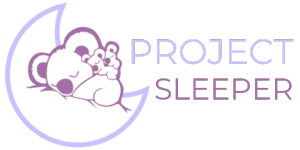Breastfeeding offers numerous benefits, not only for the child but also for the mother. It reduces postpartum bleeding, accelerates weight loss, decreases the incidence of breast, ovarian, and endometrial cancer, prevents osteoporosis, and protects against cardiovascular diseases, such as heart attacks.
However, the first experience isn't always easy, leading many mothers to prefer bottles, silicone nipples, and other alternatives.
It's normal for initial discomfort to cause pain, discouraging mothers from continuing to breastfeed. To prevent this, we have selected five fundamental tips to help mothers breastfeed calmly and safely.
Before we start, a universal tip: always clean your nipples and hands thoroughly before breastfeeding your child.

Location and Timing
Choosing the right time for breastfeeding, scheduled by the clock, will help you and your baby establish a biological rhythm. This preparation also requires selecting a quiet, airy location, free from bright lights or darkness, and without interruptions. Establishing this bond of love is essential for both of you to be connected at this moment. Don't let stress and problems interfere, as tension can even be sensed by the baby.
Nutrition
Starting at four months, you can introduce some foods, even if milk remains the primary source. Make sure you have established proper feeding times. After four months, avoid leaving your child without food for long periods. This applies to you as well; neglecting your own nutrition can lead to stress, which benefits neither of you.
Positions
There’s a saying: "a good position is worth a thousand feedings." This is true! Successful breastfeeding is directly related to the position and how the mother holds the baby. The correct latch is when the baby faces the mother, with their bellies touching, and the mouth at the breast level, without straining the neck. Always bring the baby to the breast, not the other way around.
Breast Pain
Warning! Pain can indicate various issues, including improper positioning, which may hinder milk flow, or that your nipples may be sore.
To manage this, it’s recommended to massage your breasts and regularly stimulate your nipples. In general, breast stimulation can be done up to three times a day. Remember, breastfeeding should not be a painful experience.

Increased Milk Production
With good nutrition, breastfeeding tends to be the best source of nutrients for the child. Childhood is a significant phase for every human, and neglecting this process is not advisable. It's during childhood that all the major body systems, including the brain, develop for lifelong learning. Drink plenty of water, more than you usually do. Herbal teas, breastfeeding-specific herbal supplements, fruits, cereals, and vegetables are the most appropriate choices.
Breastfeeding: A Moment of Love
Amid the hustle and bustle of daily life, demands, and excess information, breastfeeding with peace and safety becomes a moment to relax and connect with yourself. Nurturing your baby requires preparation, but it can be a loving act between mother and child.



